Eric Newton: Sanctuary mosaic scheme
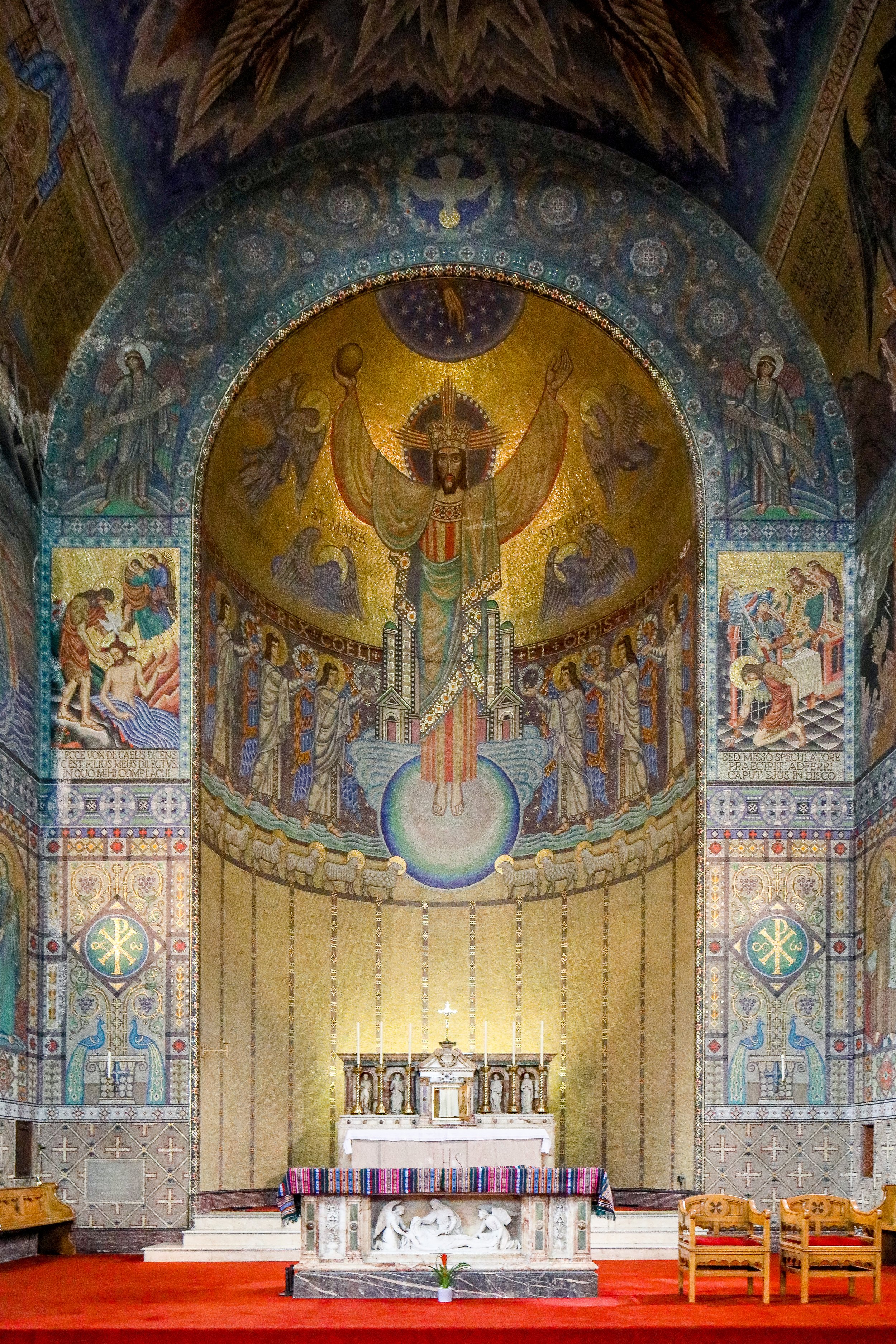
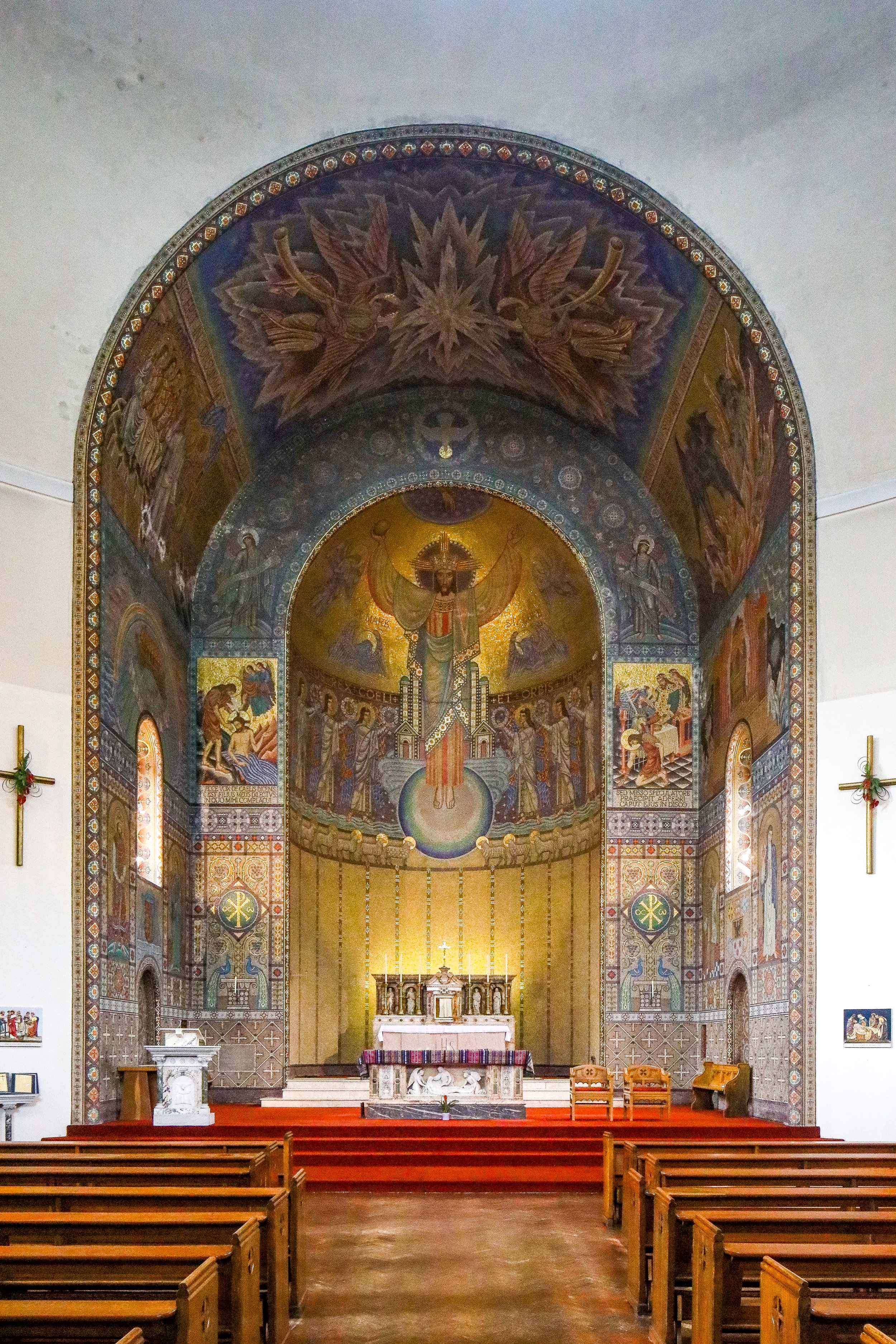

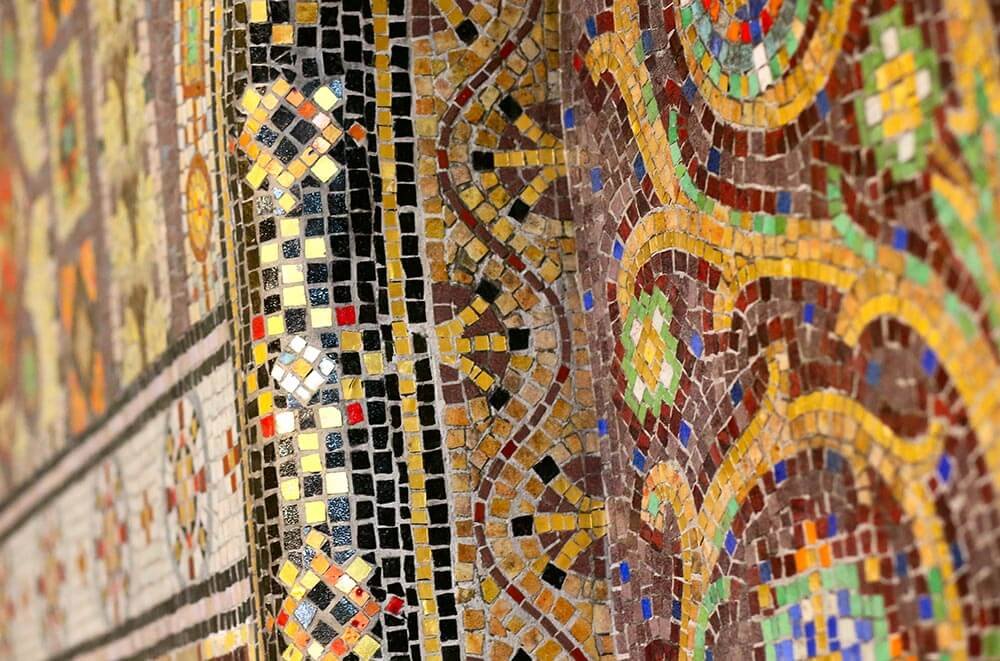
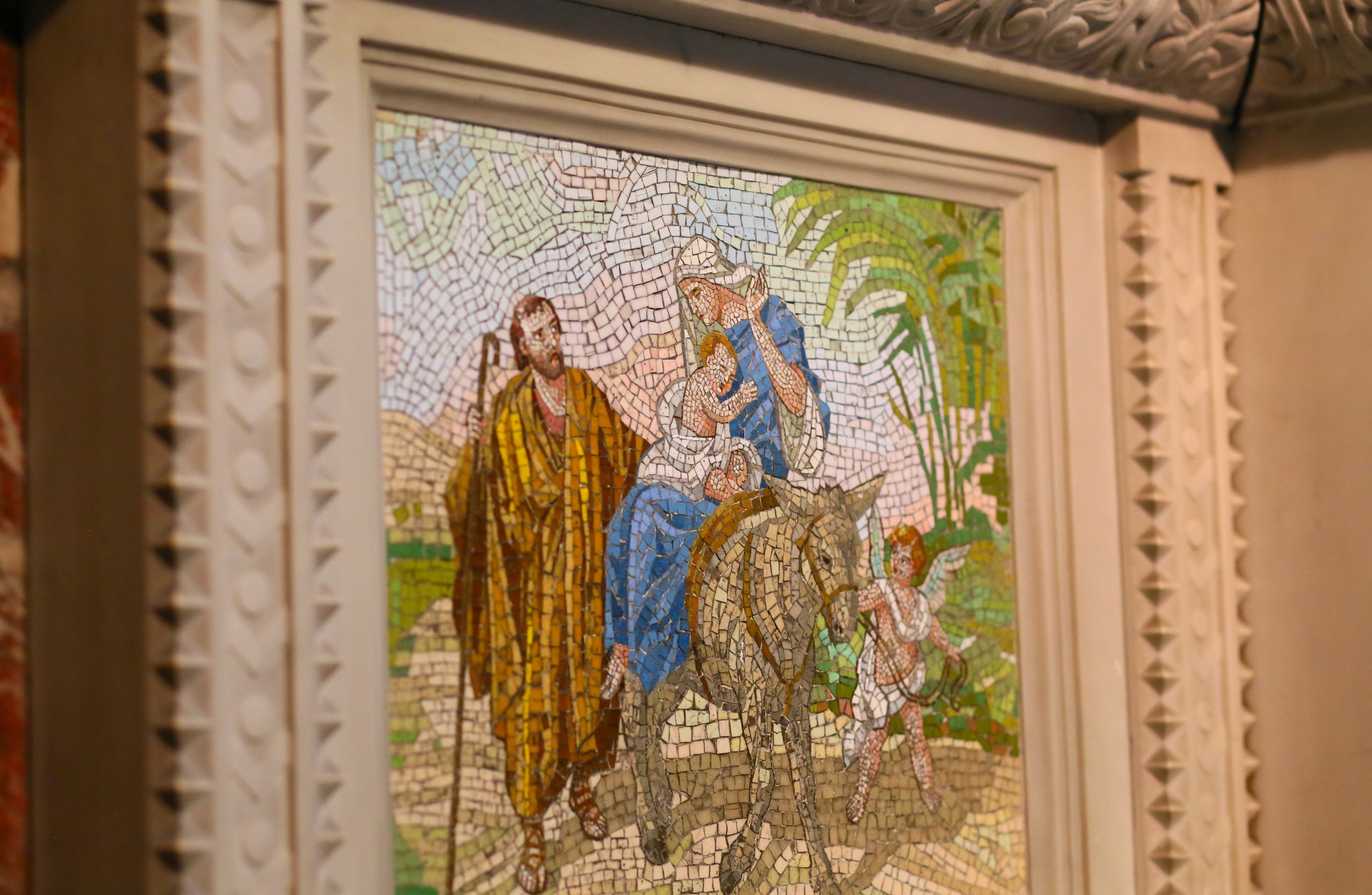
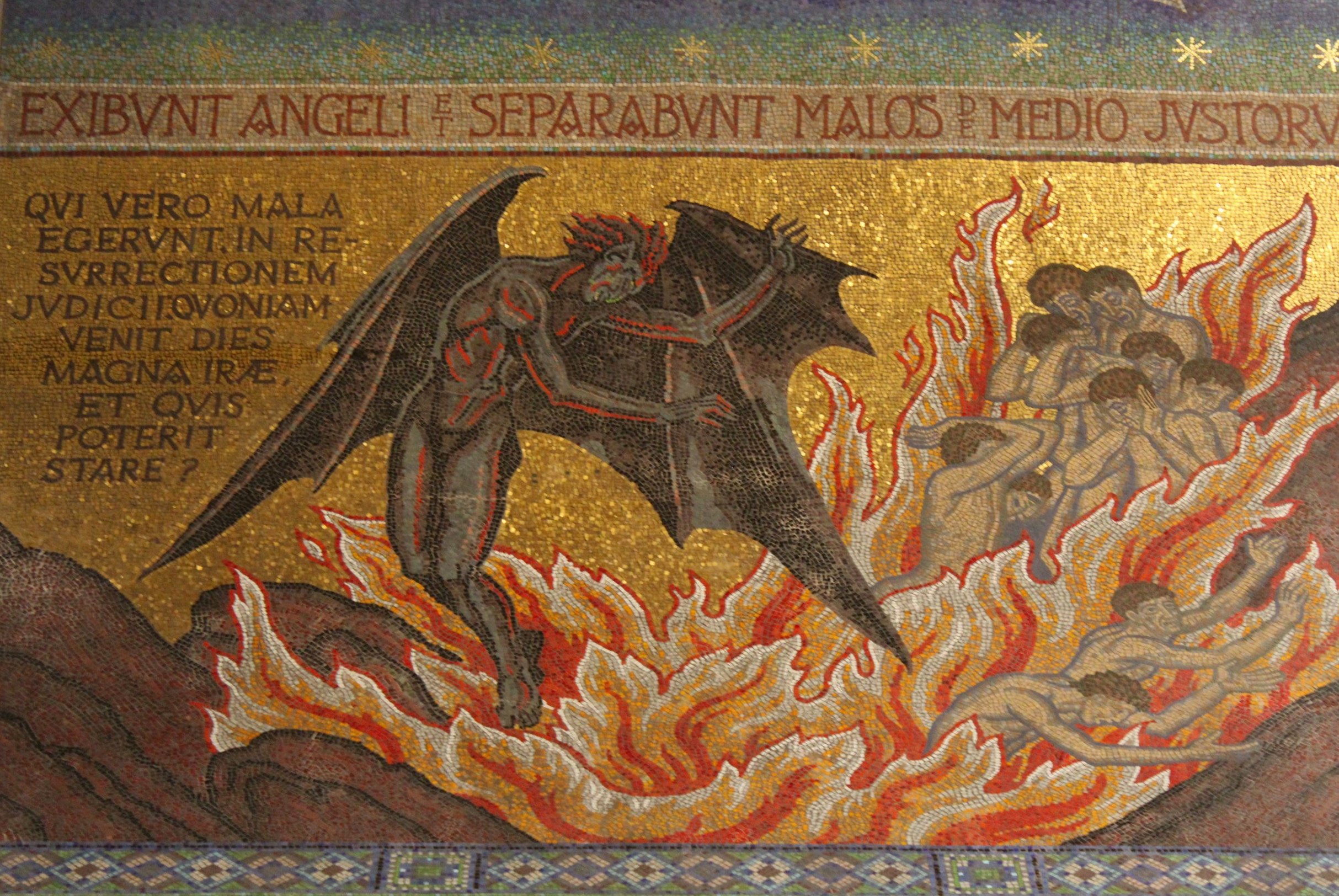
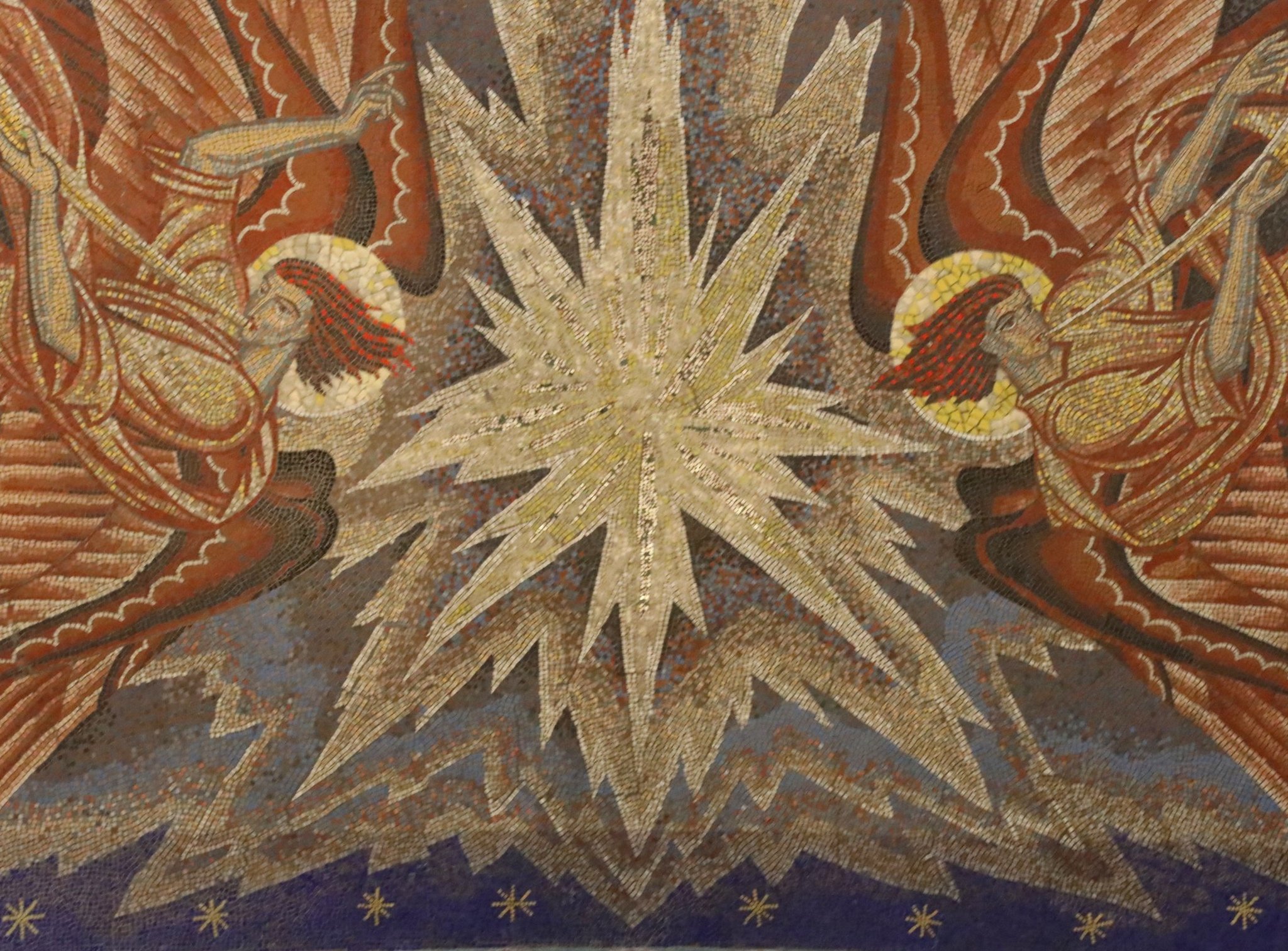
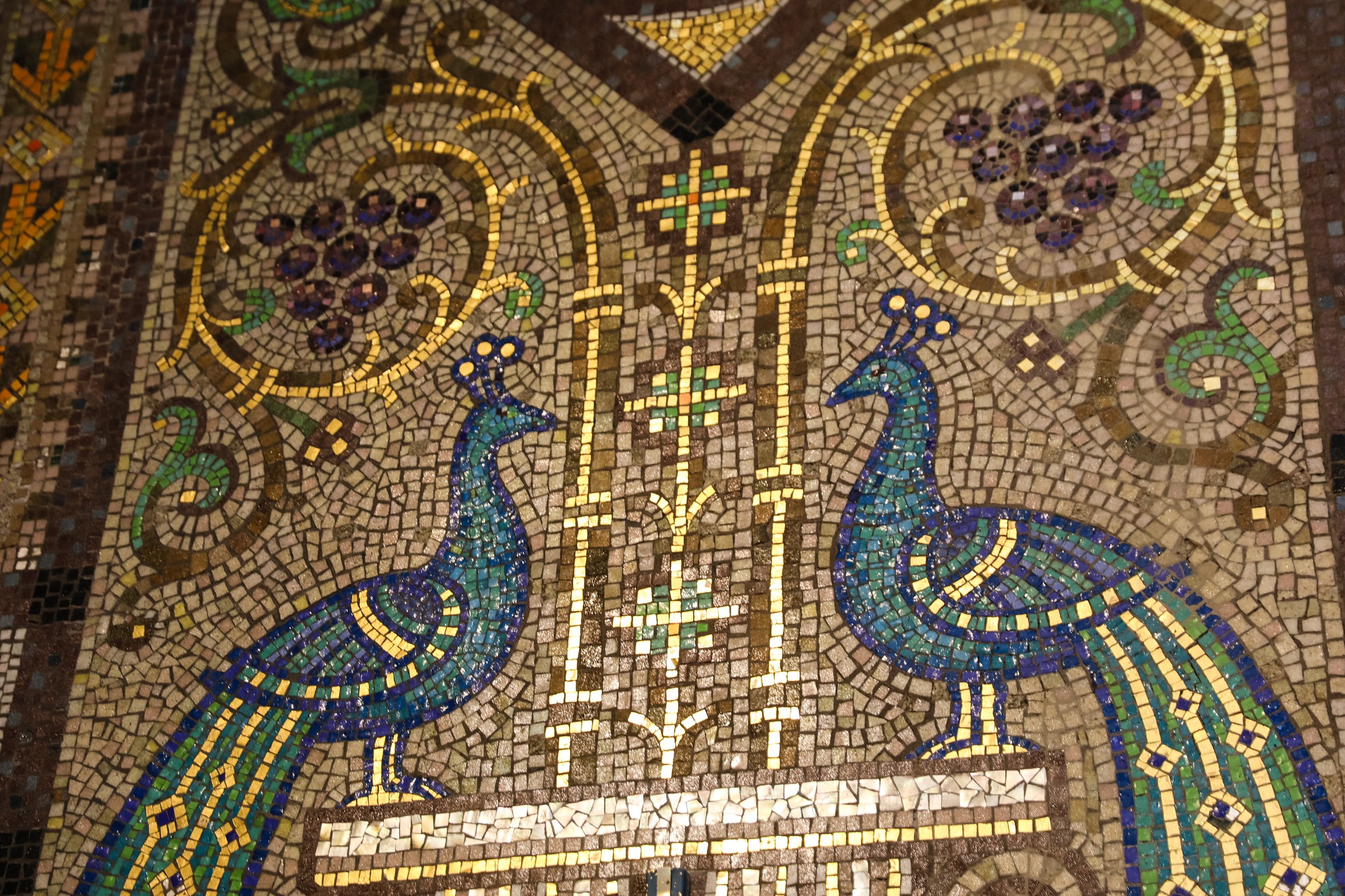
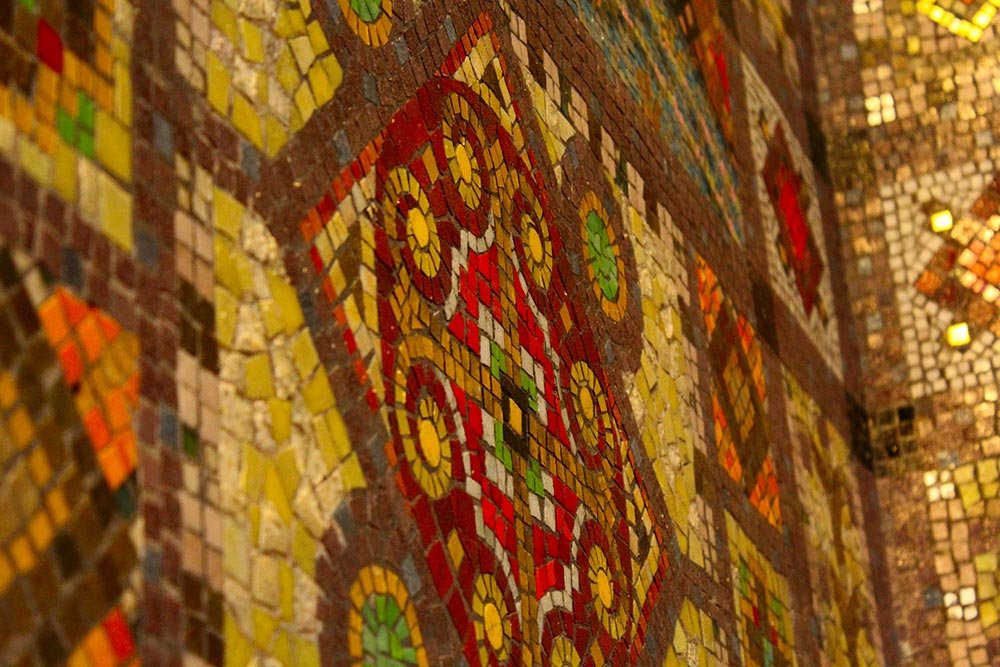

Title: Sanctuary mosaic scheme
Artist: Eric Newton (1893–1965)
Location: St John the Baptist, Rochdale (RC)
Date: 1932–33
Intended to resemble the Hagia Sophia, with a monumental concrete dome, the neo-Byzantine St John the Baptist church was built in 1927. The interior is dominated by a magnificent mosaic scheme which covers the sanctuary apse, designed by the art critic and artist Eric Newton for Ludwig Oppenheimer Ltd., a mosaic firm set up by his grandfather. The scheme, which took a year to build, draws on Newton’s considerable knowledge of art history and his study of early Christian mosaics, although there are echoes too of more recent religious art, such as the prints of William Blake. It depicts Christ the King in the central semi-dome, surrounded by the four Evangelists, with processions of angels bearing wreaths and the apostles as sheep in tiers below. Behind the altar is a shimmering expanse of gold, shot through with finely patterned vertical lines. To each side are scenes from the life of John the Baptist – Christ’s Baptism and John’s beheading. The deep arch connects the human congregation of the nave to the eternal life within – four saints are depicted, Jerusalem, Noah’s ark, the Bishop of Salford’s coat of arms. Here are some of the most dramatic parts of the scheme: to the right, a blue-black winged Satan casts the damned into Hell, and above, angels blowing horns frame an enormous, explosive star. No part of the scheme lacks detail and imagination: robes, wings, edges all boast rich patterning; behind the tearing of the veil, an olive tree bends in the storm.
The church was awarded National Lottery Funding in 2022 to repair the mosaics which had suffered water damage and to organise outreach events, including a photography project with Year 9 students whose work we are pleased to include. A 3D model of the mosaics can be viewed here.
Eric Newton (1893–1965), formerly Eric Oppenheimer, was the grandson of Ludwig Oppenheimer, a German Jew who had settled in Manchester, establishing a mosaic workshop. Newton joined the firm in around 1913, working with his father Lehmann, a talented mosaic designer and a keen climber, who was killed in the war. In 1918 Newton adopted his mother’s maiden name because of anti-German prejudice. From the 1920s he became known as an art critic and historian, for the Manchester Guardian and in many radio broadcasts, while continuing his work in mosaics. For 12 years he was president of the British section of the International Association of Art Critics (AICA). He died in 1965; The Christian Faith in Art, co-authored with the theologian William Neil, was published posthumously.
Further Information
Medium: stone, coloured marbles and coloured glass
Permanent display
See Newton’s sanctuary mosaic on the Ecclesiart map here.
Other artworks in churches by Eric Newton: Mosaics in Sacred Heart Church, Hillsborough; Saint Colmcille’s Church, East Belfast; The Church of Our Lady and St John, Chorlton-cum-Hardy, Manchester; Royal Hospital School Chapel, Holbrook; altarpiece, Our Lady and St Edward, Chiswick.
